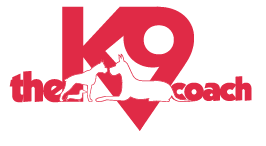Dogs Make Choices
Dogs make decisions and choices every day. Don’t take that away from them.
Your dog thinks and makes choices every day. I'm watching mine now as one sleeps in his favorite chair. I don't know what makes it his favorite spot, but it is. Another is watching birds from the back steps. He's choosing to do this, at this time. He could be sleeping, chewing a bone, or playing with one of the other dogs, but right now he's just watching the birds. He seems to be content enjoying the afternoon. Another is laying in the sun. It's hot. Why she has chosen to lay in the sun rather than the shade is entirely her decision. She won't stay long, and I know in a few minutes she'll get up and come to the shade with the rest of us. They have all made choices about how to spend their afternoon.
Dogs Solve Problems
When I give my doxies a new food puzzle the literally work it out in their little minds how to get the food out. It's trial and error. It might take a while, they might even get frustrated the first time or two, but they solve the issue and get the reward.
When Vinnie is out in public and I make him "place" on some new object -- like a rock or park bench -- or walk across a little bridge on the walking trails he has to figure out how to get there. He knows what "Place" means, he has learned to trust me, and he works it out with motivation and encouragement from me.
A Lesson from The Stray Dogs
Dogs who have been stray have mastered their skills of finding food and water. They make the decision about where to sleep, when to sleep and how to get access to food and water. When food and water are present, they will figure out how to survive. We know they are capable of learning.
When they move into our social world, the skills they need to have to succeed in our homes and environment may be radically different that the skills they learned instinctively or under abusive conditions.
The point is dogs make choices, decisions, and they learn.
When we teach them new skills, like how to focus on their handler under distractions, they can learn to make the decision to "watch" you when it matters and to hold simple commands. They can make the decision do something other than bark and lunge at other dogs on their walk. They can make a decision to walk away from a bone or not be growly at strangers. They might need help to get there, but it can be done!
They can only make these better decisions if they have alternative skills in their toolbox.
When we teach new skills during training classes, we teach them what to do, how to do it and when to do it. We teach you timing techniques and learning to read your dogs body language.
As the learn, we have to give the dog a few seconds to think and make a decision to perform that skill before we apply any tension or navigation to their leash. Avoid using your leash as a brake or a tug to get started on your walk. Just give the command/signal. We can show you the proper time to apply gentle tension to the leash, but it's not for the command itself.
Let your body (hand signal, spatial pressure, lack of movement) communicate expectations -- like standing silently at meal time and waiting for the dog to sit to earn his bowl? Or waiting at a threshold before he is permitted to exit the door or the crate. Walking away from him when he's too excited to put on his leash or he's barking at you demanding attention. Countless places you can communicate to your dog with no words at all!
We want them to learn to make these choices even when there is no leash at all.
Through guided learning, let your dog solve problems and think. He will then start to make better decision more often.
